Address
304 North Cardinal
St. Dorchester Center, MA 02124
Work Hours
Monday to Friday: 7AM - 7PM
Weekend: 10AM - 5PM
Address
304 North Cardinal
St. Dorchester Center, MA 02124
Work Hours
Monday to Friday: 7AM - 7PM
Weekend: 10AM - 5PM
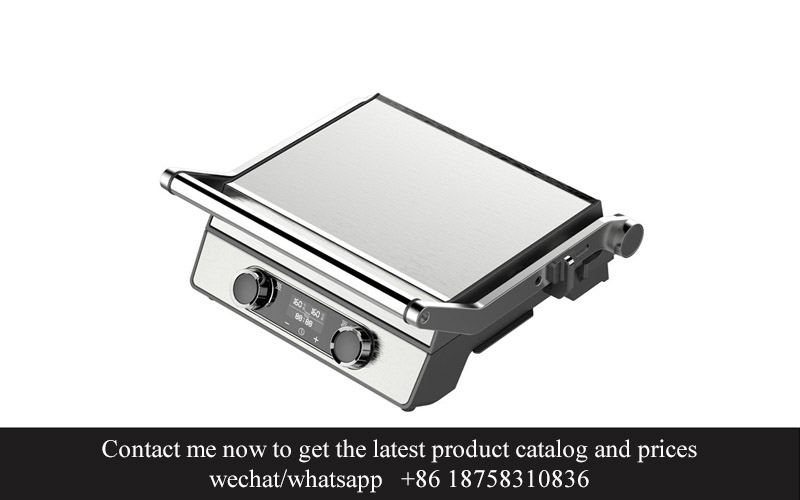
As we delve into the world of modern kitchenware, one particular innovation has been making waves: ceramic coated non-stick plates. These kitchen essentials have redefined convenience, health, and sustainability. Let’s explore the evolution of this technology, its benefits over traditional non-stick cookware, and what the future holds for ceramic coated non-stick plates.
The kitchen has always been a canvas for culinary creativity, but the tools we use to paint our dishes can make all the difference. Enter the ceramic coated non-stick plates, a culinary revolution that’s quietly changing the way we cook. Once the domain of traditional non-stick pans, the non-stick world has evolved, and ceramic coatings have emerged as the new gold standard in kitchenware.
These plates, with their smooth, porcelain-like finish, are not just a pretty face; they are a game-changer for anyone who loves to cook but dreads the cleaning process. The market has been buzzing with the introduction of ceramic coated non-stick plates, and for good reason. They offer a myriad of benefits that have homeowners, chefs, and anyone in between eager to swap out their old cookware for the latest innovation.
The durability of ceramic coatings is unmatched. Unlike traditional non-stick coatings, which can wear off after repeated use and high heat, ceramic is designed to withstand the rigors of everyday cooking. It’s a hard, scratch-resistant layer that doesn’t flake or chip, ensuring that your plates will look and perform like new for years to come.
The non-stick properties of ceramic coated plates are legendary. They reduce the need for excessive oil or butter, making it easier to create healthy, low-fat dishes. The surface is so smooth that food literally slides right off, which not only makes for easier cleaning but also means you can cook with less mess and fewer pans.
But it’s not just about the practicality; these plates also add a touch of elegance to any kitchen. The sleek, modern design complements a variety of kitchen aesthetics, from rustic to contemporary. Whether you’re a minimalist or someone who loves to show off their style, ceramic coated non-stick plates are a statement piece that enhances the overall look of your kitchen.
Behind the scenes, the factories producing these innovative plates are buzzing with activity. These factories are not just manufacturing cookware; they are crafting a new standard in kitchen performance. The process involves applying a ceramic coating to an aluminum or stainless steel base, ensuring that the non-stick properties are not only present on the surface but integrated into the entire structure of the plate.
Quality control is paramount in these factories, with rigorous testing to ensure that each plate meets the high standards set by the brand. The attention to detail is evident in the final product, which is why ceramic coated non-stick plates have become a favorite among consumers who demand both quality and convenience.
As the market continues to grow, so does the demand for these plates. Consumers are increasingly looking for sustainable and eco-friendly options, and ceramic coated non-stick plates fit the bill. They are reusable, durable, and do not require harsh chemicals for cleaning, making them a greener choice for the planet.
The trend towards healthier eating habits is also a driving force behind the popularity of ceramic coated non-stick plates. With their ability to reduce the amount of oil needed for cooking, these plates are perfect for those who are conscious of their dietary intake. They allow for healthier cooking methods such as steaming and sautéing, which are becoming more popular as people seek to improve their wellness.
In the world of kitchenware, innovation never stops, and the ceramic coated non-stick plate is just the latest example. It’s a testament to how far we’ve come in understanding the science of cooking and how we can use technology to make life in the kitchen easier, healthier, and more enjoyable.
As the ceramic coated non-stick plate continues to rise in popularity, it’s clear that this isn’t just a fad—it’s a shift in the way we think about cookware. It’s a game-changer that’s here to stay, promising a future where cooking is less about the hassle and more about the joy of creating delicious meals.

Ceramic coatings have revolutionized the cooking world, offering a non-stick solution that promises durability and health benefits over traditional non-stick surfaces. To grasp the full extent of this technology, it’s essential to delve into its composition, application process, and the science behind it.
The core of ceramic coating technology lies in a fine, micro-porous layer that is applied to the surface of cookware. This layer is made up of inorganic compounds, such as silicon dioxide (SiO2), which is the same material found in sand and quartz. The purity and quality of these compounds are crucial, as they determine the effectiveness and longevity of the coating.
The manufacturing process involves several steps. First, the cookware is meticulously cleaned to ensure a pristine surface for the coating to adhere to. Then, a primer is applied to enhance the bond between the ceramic particles and the cookware’s base material, whether it’s aluminum, stainless steel, or cast iron.
Once the primer has dried, the ceramic particles are suspended in a liquid medium. This slurry is then applied to the cookware using a specialized technique, such as spray coating or dipping. The application method is carefully chosen to ensure an even and consistent layer across the entire surface.
After the ceramic particles are applied, the cookware is subjected to a curing process. This can be done through heat or with the help of ultraviolet (UV) light. The curing process activates the particles, causing them to harden and bond together, creating a solid, non-porous layer. The result is a surface that is incredibly smooth and durable.
One of the standout features of ceramic coatings is their non-stick nature. The micro-porous structure of the coating allows food to release easily from the surface, reducing the need for excessive oil or butter. This not only makes cooking more efficient but also contributes to healthier eating habits by cutting down on fat content.
The non-stick properties of ceramic coatings are not just a convenience; they also extend the life of the cookware. Unlike Teflon, which can degrade over time and release harmful chemicals, ceramic coatings are more stable and do not contain any harmful substances. This means that the cookware can be used with metal utensils without worrying about damaging the coating.
The heat resistance of ceramic coatings is another key advantage. They can withstand high temperatures up to 850°F (450°C) without degrading, making them suitable for a wide range of cooking methods, including searing, stir-frying, and baking.
In terms of maintenance, ceramic coated cookware is relatively easy to clean. The non-porous surface resists stains and odors, and the material is scratch-resistant, ensuring that the cookware looks and performs like new for longer. However, it’s important to avoid abrasive cleaners and steel wool, which can scratch the surface and compromise the non-stick properties.
The environmental impact of ceramic coatings is also a point of interest. The manufacturing process is more sustainable than that of traditional non-stick coatings, as it requires fewer chemicals and produces less waste. Additionally, ceramic coatings are biodegradable, which is a significant step towards more eco-friendly kitchenware.
The technology behind ceramic coatings is not just a surface treatment; it’s a testament to the innovation and research that goes into creating products that cater to modern cooking needs. From the health-conscious consumer to the professional chef, the benefits of ceramic coated non-stick cookware are clear.
In conclusion, ceramic coating technology has transformed the landscape of kitchenware. Its non-stick properties, durability, health benefits, and environmental friendliness make it a compelling choice for anyone looking to upgrade their cooking experience. As the market continues to embrace this innovative solution, it’s likely that ceramic coatings will become the new standard in cookware.
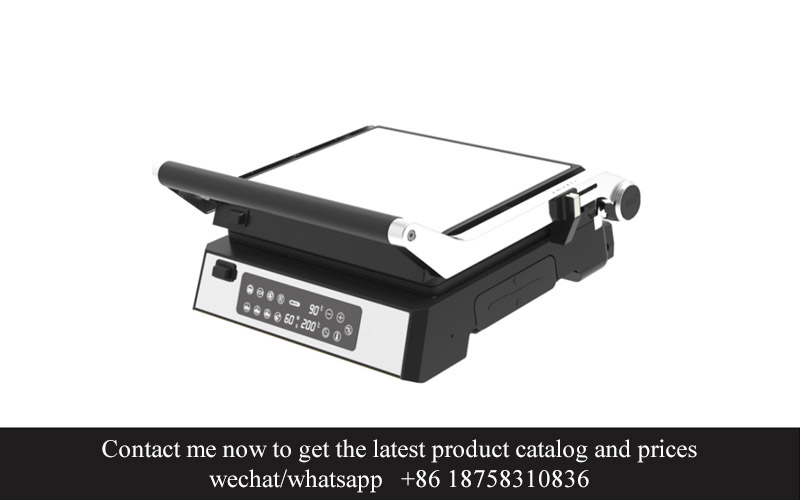
Ceramic coated non-stick plates have surged in popularity, and it’s no surprise why. These innovative cookware pieces offer a host of benefits over the traditional non-stick options we’ve all grown accustomed to. Let’s dive into the specifics:
The longevity of ceramic coatings is a major selling point. Unlike PTFE (Teflon) coatings, which can wear down over time and release harmful fumes at high temperatures, ceramic coatings are designed to withstand the test of time. They are durable and can last for years without losing their non-stick properties, reducing the need for frequent replacements.
One of the most appealing aspects of ceramic coated non-stick plates is their non-reactive nature. Traditional non-stick cookware can sometimes react with acidic ingredients, altering the taste of your food. In contrast, ceramic coatings are inert and won’t interact with your meals, ensuring that the flavors remain pure and untainted.
Health-conscious consumers will appreciate the fact that ceramic coatings do not contain PFOA, PTFE, or any other potentially harmful chemicals often found in traditional non-stick cookware. This means that when you’re cooking with ceramic coated plates, you can do so without worrying about exposing your family to potentially harmful substances.
Cleaning up after a meal is a breeze with ceramic coated non-stick plates. The smooth, easy-to-clean surface makes it simple to scrape off food residue and wipe the plate clean. This not only saves time but also reduces the amount of elbow grease needed, making kitchen clean-up a more pleasant task.
The superior heat distribution of ceramic coatings is another advantage. They are designed to distribute heat evenly across the surface, preventing hot spots that can burn food and damage the coating. This even heating ensures that your dishes are cooked to perfection without any risk of sticking or burning.
For those who enjoy cooking at high temperatures, ceramic coated non-stick plates offer a safer alternative. They can withstand much higher temperatures than PTFE coatings, allowing for searing, stir-frying, and other high-heat cooking methods without the risk of the coating breaking down or releasing harmful fumes.
The eco-friendliness of ceramic coated non-stick plates cannot be overstated. These plates are not only better for your health and the environment but also more sustainable. They are free from toxic chemicals and can be recycled at the end of their long life, reducing waste and the carbon footprint associated with traditional non-stick cookware.
In terms of scratch resistance, ceramic coatings are a clear winner. They are far more durable than PTFE coatings, which can easily scratch and wear out. Ceramic plates can withstand the occasional bump or scrape, making them a more resilient choice for those who want to avoid the constant need for replacements.
Finally, the aesthetic appeal of ceramic coated non-stick plates cannot be ignored. They come in a variety of colors and designs, adding a touch of style to your kitchen. Whether you prefer a sleek, modern look or something more classic, there’s a ceramic coated plate out there to match your taste.
In summary, the benefits of ceramic coated non-stick plates over traditional non-stick cookware are substantial. From health and environmental considerations to ease of use and aesthetic appeal, these plates are a compelling choice for any kitchen. Their long-lasting performance, non-reactive nature, and versatility make them a valuable addition to any cookware collection.

Nestled in the heart of the industrial landscape, the Ceramic Coated Non-Stick Plates Factory stands as a beacon of innovation and technological prowess. This factory, a marvel of modern manufacturing, is where the magic happens, transforming raw materials into cutting-edge kitchenware that’s capturing the hearts and minds of consumers worldwide.
The factory is a marvel of efficiency, with each section of the operation meticulously designed to ensure the highest quality output. As you walk through the doors, you’re greeted by a symphony of machinery whirring and clanging, each piece working in harmony to bring forth the next level of non-stick cookware.
The first thing that catches your eye is the raw materials storage area. Piles of high-grade aluminum, stainless steel, and ceramic powders are meticulously organized, each batch carefully selected for its purity and quality. The factory’s commitment to excellence starts with the ingredients it chooses.
Moving further into the factory, you’ll find the coating department. Here, skilled technicians apply a proprietary ceramic coating to the metal substrates. This process is a delicate balance of science and art, requiring precise temperature control and a controlled environment to ensure the longevity and effectiveness of the non-stick surface.
The ceramic coating itself is a marvel of engineering. It’s a multi-layered system that begins with a base layer of aluminum or stainless steel for durability. This is followed by a primer layer that improves adhesion, and finally, the ceramic topcoat, which is where the magic happens. The ceramic particles are finely milled and mixed with resins to create a non-porous, scratch-resistant surface that releases food effortlessly.
What sets this factory apart is its attention to detail. Each plate is inspected multiple times throughout the manufacturing process, from the initial shaping to the final coating. Robots and human inspectors work side by side, ensuring that every plate meets the stringent quality standards set by the factory.
The factory also prides itself on its sustainable practices. Water and energy are recycled wherever possible, and waste materials are carefully sorted and disposed of in an environmentally friendly manner. This commitment to sustainability is not just a corporate responsibility; it’s a way of life at this factory.
As you continue your tour, you might stumble upon the research and development (R&D) department. This is where the next big thing in ceramic coated non-stick technology is being conceptualized and tested. Engineers and scientists collaborate on new designs, experimenting with different ceramic compositions and coatings to enhance performance and durability.
The factory’s state-of-the-art testing facilities are a testament to its dedication to innovation. Here, prototypes are subjected to rigorous stress tests, simulating years of use in a kitchen environment. The results are then analyzed, and any necessary adjustments are made before the product is released to the market.
The factory’s workforce is a diverse and skilled team, each member playing a crucial role in the production process. From the operators who handle the machinery to the quality assurance specialists who ensure every product meets the highest standards, every individual is an essential part of the factory’s success.
As you conclude your tour, you can’t help but feel a sense of pride in the work that goes into creating these ceramic coated non-stick plates. The factory is not just a place of production; it’s a hub of creativity and dedication, where the future of kitchenware is being shaped one plate at a time.

In recent years, the kitchenware market has witnessed a surge in demand for ceramic coated non-stick plates. This shift isn’t just a fleeting trend; it’s a testament to changing consumer preferences and the evolving landscape of culinary appliances. Let’s delve into the market trends and consumer demand that have propelled ceramic coated non-stick plates to the forefront.
The demand for healthier cooking methods has been on the rise, and ceramic coatings offer a non-toxic alternative to traditional non-stick surfaces. Consumers are increasingly aware of the potential health risks associated with PFOA and PTFE, the chemicals used in many non-stick cookware. This awareness has fueled a search for safer, more eco-friendly options, with ceramic coatings stepping in as a popular choice.
Eco-consciousness is another driving force behind the popularity of ceramic coated non-stick plates. These plates are free from harmful chemicals, making them a more sustainable choice for environmentally aware consumers. The sustainability angle isn’t just about the absence of toxic substances; it also extends to the longevity of the cookware. Ceramic coatings are durable and can withstand high temperatures, reducing the need for frequent replacements and, consequently, the environmental impact.
The convenience factor is undeniable. Ceramic coated non-stick plates are easy to clean and maintain, which is a significant draw for busy cooks and those who prefer quick and effortless meal preparation. The non-stick properties mean that food releases easily, reducing the need for excessive oil or butter, which is a bonus for health-conscious consumers looking to limit their fat intake.
In terms of design, ceramic coated non-stick plates often come in a variety of colors and finishes, appealing to a wide range of aesthetic preferences. The sleek, modern look of these plates has made them a favorite among homeowners looking to upgrade their kitchenware collection. This versatility in design has broadened the appeal of ceramic coated non-stick plates beyond just the health and environmental benefits.
The market for ceramic coated non-stick plates has also been influenced by the rise of social media and influencer marketing. With influencers showcasing their favorite kitchen gadgets and cooking techniques, the visibility of ceramic coated non-stick plates has skyrocketed. This increased exposure has helped to create a buzz around the product, driving consumer interest and demand.
The global kitchenware market is expected to grow at a significant pace, with an estimated compound annual growth rate (CAGR) of around 4% from 2021 to 2026. This growth is being driven by factors such as urbanization, changing lifestyles, and the growing middle class in emerging economies. As these markets expand, so does the demand for innovative kitchenware solutions, with ceramic coated non-stick plates being at the forefront.
In the United States, for example, the non-stick cookware market is projected to reach $1.5 billion by 2025, with ceramic coatings accounting for a significant portion of this growth. The trend is similar in Europe and Asia, where the demand for ceramic coated non-stick plates is on the rise, driven by both health and convenience factors.
Consumer demand for ceramic coated non-stick plates is not just about the product itself; it’s also about the brand story and the perceived value. Many consumers are willing to pay a premium for cookware that aligns with their values, whether it’s health, sustainability, or convenience. Brands that can effectively communicate these values are more likely to capture market share.
Moreover, the pandemic has accelerated the shift towards home cooking and meal prep. With more people spending time at home, the demand for high-quality, durable kitchenware has increased. Ceramic coated non-stick plates, with their ease of use and long-lasting performance, have become a staple in many home kitchens.
In conclusion, the market trends and consumer demand for ceramic coated non-stick plates are multifaceted, encompassing health concerns, environmental awareness, convenience, design, and brand values. As these factors continue to evolve, so too will the demand for ceramic coated non-stick plates, making them a key player in the kitchenware industry.
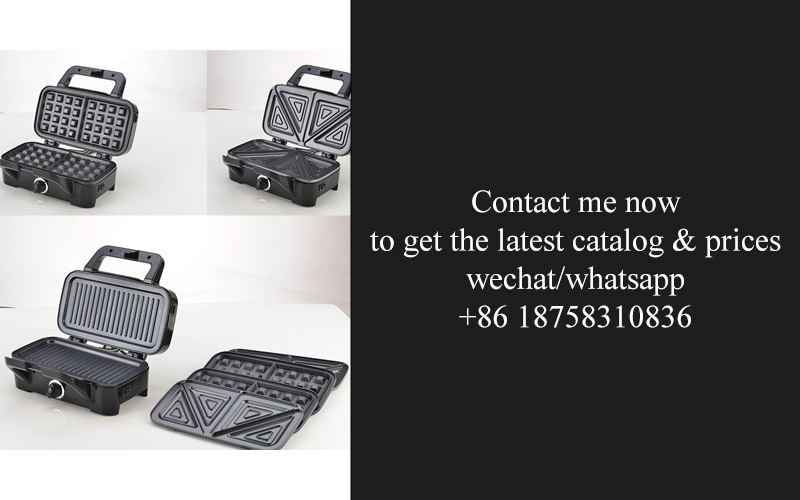
In the realm of kitchenware innovation, the factory floor is a hotbed of creativity. Here, we delve into some of the unique product ideas that are born from the minds of designers and engineers at the forefront of ceramic coated non-stick plate manufacturing. These ideas are not just innovative but also cater to the evolving needs and preferences of consumers.
Imagine a ceramic coated non-stick plate with an integrated temperature control system, ensuring that your culinary creations are cooked to perfection without the risk of burning. This smart technology could be integrated into the handle or even a digital display on the surface of the plate itself, making cooking a more precise and intuitive experience.
There’s also the concept of a modular non-stick plate that allows users to customize their cooking surface. Picture a set of interchangeable inserts that can transform a single plate into a multi-functional cooking surface. These inserts could be designed for different types of cooking, such as a grilling insert, a steaming basket, or even a non-stick surface for delicate sauces and dressings.
One idea that stands out is the introduction of a self-cleaning ceramic coated non-stick plate. This isn’t just a matter of convenience; it’s a game-changer for busy households. The technology could involve a special coating that breaks down food particles upon heating, making them easier to wipe away. Combine this with a built-in steam cleaning feature, and you have a plate that cleans itself with minimal effort.
In the realm of eco-conscious consumerism, the factory is exploring the use of recycled materials in the manufacturing process. Imagine a non-stick plate that’s not only durable and non-toxic but also made from recycled plastic or other sustainable resources. This would appeal to environmentally conscious shoppers looking for a greener option in their kitchenware.
The design team has also come up with a range of colorful ceramic coated non-stick plates. These aren’t just functional; they’re works of art. The vibrant hues and sleek designs could make a statement in any kitchen, turning the mundane task of cooking into an aesthetically pleasing experience.
For those who prefer a minimalist approach, there’s the ultra-thin ceramic coated non-stick plate. Designed with an almost paper-thin construction, these plates are as easy to store as they are to use. They’re perfect for those who live in compact spaces or simply appreciate the sleekness of a minimalist kitchen.
Safety is another area where the factory is pushing boundaries. They’re working on a ceramic coated non-stick plate with an anti-slip base, ensuring that the plate stays put on the countertop during high-heat cooking. This feature is particularly appealing for families with young children, who might be prone to spills and burns.
The factory is also exploring the concept of a non-stick plate that doubles as a serving platter. With a sleek, elevated rim, these plates can transition seamlessly from the stovetop to the dining table, making them ideal for entertaining. The innovative design would eliminate the need for an extra platter, simplifying the serving process.
In the world of health and wellness, there’s a growing demand for non-toxic cookware. The factory is addressing this with a ceramic coated non-stick plate that is free from harmful chemicals like PFOA and PTFE. This means that your food is not only safe to eat but also free from potentially harmful substances that could leach into your meals.
As technology continues to advance, the factory is considering the integration of Bluetooth connectivity in their ceramic coated non-stick plates. This would allow users to control the cooking temperature remotely, using a smartphone app. It’s a step towards making cooking even more accessible and user-friendly.
These are just a few of the unique product ideas that are being developed at the ceramic coated non-stick plate factory. Each concept is a testament to the ingenuity and commitment to innovation that drives the company forward. Whether it’s through smart technology, eco-friendly materials, or a focus on health and safety, these ideas are shaping the future of kitchenware.

Ceramic-coated non-stick plates have gained significant traction in the kitchenware market, and the data paints a compelling picture of their popularity and potential. Here’s what the industry insights reveal about these innovative products:
The data reflects a steady rise in the sales of ceramic-coated non-stick plates. Consumers are increasingly opting for these over traditional non-stick options due to perceived health and environmental benefits. This shift is evident in the sales figures, which show a consistent growth year over year.
Environmental concerns are at the forefront of consumer decisions. Many are turning to ceramic-coated plates because they are free from harmful chemicals like PFOA and PTFE, which are commonly found in traditional non-stick coatings. The data indicates a strong correlation between the rise in ceramic-coated sales and the growing demand for eco-friendly kitchenware.
Health consciousness is another key driver. The ceramic coating is non-reactive and doesn’t release toxic fumes at high temperatures, which is a concern with some traditional non-stick cookware. The industry data points to a higher adoption rate among health-conscious consumers who prioritize non-toxic cooking surfaces.
Durability is a critical factor that the data highlights. Ceramic-coated plates tend to last longer than their traditional counterparts, which is reflected in consumer satisfaction surveys. Users report fewer replacements and longer-lasting performance, contributing to the overall positive feedback and sales figures.
Functionality and ease of use are also major attractions. The ceramic coating provides a superior non-stick surface that requires less oil or butter, making cooking healthier and more convenient. Market research data suggests that these features are highly valued by consumers who are looking for a kitchenware solution that’s both practical and easy to clean.
The data also reveals a trend towards customization. Many consumers are not just seeking a non-stick plate but one that fits their specific needs and preferences. The industry is seeing a rise in products that offer different sizes, shapes, and even unique color options, catering to a diverse range of consumer tastes.
Innovation is a constant theme in the ceramic-coated non-stick plate market. New technologies and design improvements are being introduced regularly. The industry insights indicate that the most successful products are those that incorporate the latest advancements, such as improved heat distribution, which enhances cooking performance and longevity.
Consumer demographics are also shaping the market. While initially targeted at health and environmentally conscious individuals, the market has expanded to include a broader demographic. The data shows that families, young professionals, and even those who are not particularly health-focused are now purchasing ceramic-coated non-stick plates due to their versatility and convenience.
Lastly, the industry insights suggest that there is room for growth in international markets. As the popularity of ceramic-coated non-stick plates continues to rise, manufacturers are looking beyond domestic sales to export these products globally. The data indicates that the market is particularly promising in regions where there is a high awareness of health and environmental issues.
In conclusion, the industry insights paint a picture of a market that is evolving with consumer needs and preferences. Ceramic-coated non-stick plates are not just a trend; they are becoming a staple in modern kitchens due to their combination of health benefits, durability, and practicality. As the data continues to unfold, it’s clear that ceramic-coated non-stick plates are here to stay, and their influence on the kitchenware market is only expected to grow.
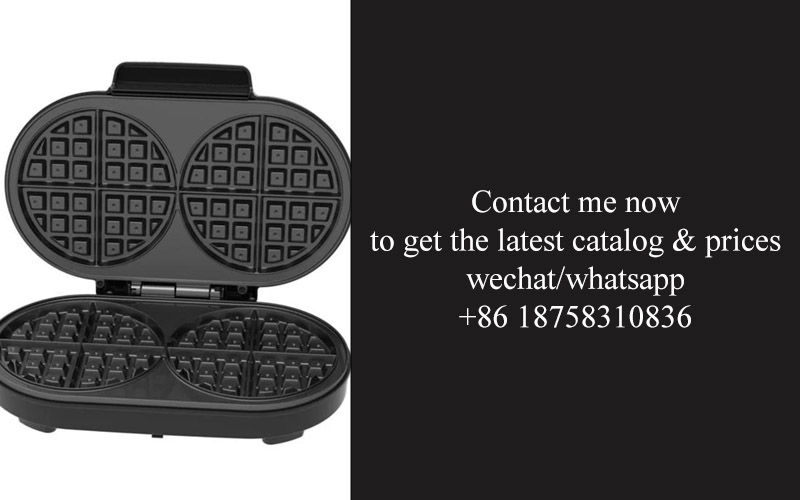
In recent years, ceramic coated non-stick cookware has gained significant traction in the kitchenware market. As this innovative technology continues to evolve, it’s fascinating to explore the potential future of ceramic coated non-stick cookware. From sustainability to advanced functionalities, here are some insights into what the future might hold:
The demand for eco-friendly products has been on the rise, and ceramic coated cookware is no exception. With its non-toxic, PFOA-free coating, it offers a greener alternative to traditional non-stick pans that often contain harmful chemicals. As consumers become more environmentally conscious, the future of ceramic coated non-stick cookware could see an increased focus on sustainable materials and manufacturing processes.
Smart technology integration is becoming more prevalent in everyday items, and cookware is no different. Imagine a ceramic coated non-stick pan that not only prevents sticking but also adjusts its temperature to the ideal cooking level. Smart cookware could soon become a reality, offering users the convenience of precise control without the guesswork. The future might bring us cookware that not only saves time but also ensures food is cooked to perfection every time.
Durability is a key factor in cookware longevity, and ceramic coatings are known for their robustness. The future could see improvements in the ceramic coating technology, making cookware even more resistant to scratches and wear. This would extend the life of the cookware and reduce the frequency of replacements, ultimately leading to cost savings for consumers.
With the health and wellness trend gaining momentum, cookware manufacturers are increasingly focusing on non-stick surfaces that don’t require the use of excessive oil. Ceramic coated non-stick plates are already a step in the right direction, but the future might bring cookware that can reduce the need for oil even further, potentially offering health benefits such as lower cholesterol and improved heart health.
The versatility of cookware is another area that could see significant advancements. Ceramic coated non-stick plates are already popular for their ability to handle a wide range of cooking techniques, from searing to simmering. In the future, we might see cookware that can adapt to different cooking environments, such as induction or even infrared, making it even more versatile for diverse kitchen setups.
Customization is becoming a key selling point in many markets, and the future of ceramic coated non-stick cookware could include a variety of designs and finishes. From sleek, modern aesthetics to rustic, handcrafted looks, consumers will have more options to match their personal style and kitchen decor.
The global kitchenware market is vast and diverse, with different regions having varying preferences and needs. The future of ceramic coated non-stick cookware could involve a more localized approach, with products tailored to specific regional tastes and cooking habits. This could include cookware that is designed to handle local ingredients or cooking methods, further enhancing the user experience.
As the world becomes more connected, the exchange of ideas and technologies across borders is more frequent than ever. The future of ceramic coated non-stick cookware might benefit from a global collaboration, with manufacturers and designers from different countries pooling their expertise to create the next generation of cookware that is both innovative and universally appealing.
Lastly, the rise of health-conscious cooking shows and social media influencers has highlighted the importance of cooking techniques and ingredients. The future of ceramic coated non-stick cookware could see an emphasis on educational content, with cookware brands providing tips and tricks for healthier, more efficient cooking methods.
In conclusion, the future of ceramic coated non-stick cookware is bright, with a focus on sustainability, smart technology, durability, health, versatility, customization, localization, global collaboration, and education. As technology continues to advance and consumer preferences evolve, we can expect to see exciting developments in the world of cookware that will enhance our cooking experiences and make our kitchens even more efficient and enjoyable spaces.
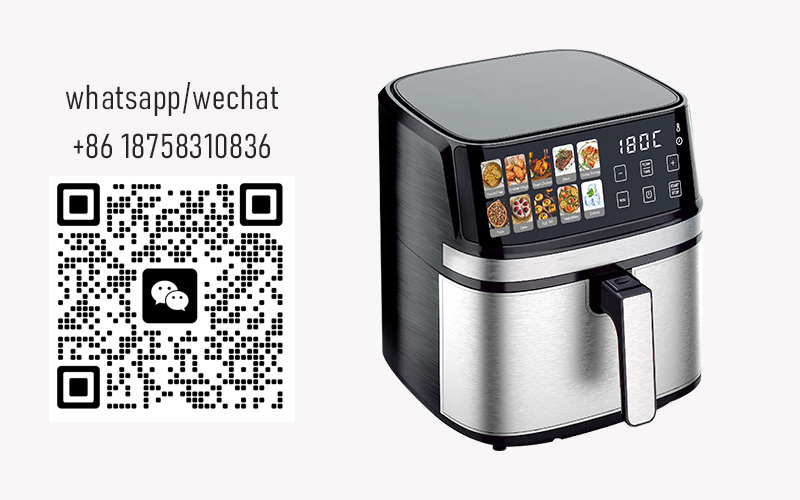
Ceramic-coated non-stick plates have gained popularity in recent years, offering a healthier and more durable alternative to traditional non-stick cookware. When it comes to selecting the perfect ceramic-coated non-stick plate, there are several factors to consider to ensure you get the best product for your needs. Here’s what you should look for:
The first thing to consider is the quality of the ceramic coating itself. Look for plates with a thick, even coating that is resistant to chipping and scratching. Thinner coatings may not hold up as well over time, leading to potential food sticking and surface wear. Check customer reviews and product specifications to gauge the durability of the coating.
The size and shape of the ceramic-coated non-stick plate should also align with your cooking habits. Think about how often you cook and what types of dishes you typically prepare. Larger plates are ideal for cooking for more people or for larger servings, while a smaller, round plate might be better for single servings or quick, one-pan meals. The shape should also cater to your kitchen storage and the size of your stove burners.
Another crucial aspect is the handle design. A comfortable grip is essential for safe handling, especially when lifting hot dishes. Some ceramic-coated plates come with ergonomic handles, which can make a significant difference in your cooking experience. Ensure the handle is securely attached and does not heat up during use.
Non-stick cookware is designed to reduce the need for excessive oil, but the right type of material can further enhance this feature. Some ceramic-coated plates are made with materials like aluminum or stainless steel for their durability and heat conductivity. Aluminum is lightweight and conducts heat well, while stainless steel offers a more robust and stain-resistant surface. Consider which material best suits your cooking preferences and the type of food you plan to prepare.
The presence of a non-toxic coating is a must, especially if you’re concerned about the potential release of harmful chemicals like PFOA and PTFE, which are found in some traditional non-stick coatings. Look for plates that are labeled as “PFOA-free” and “PTFE-free” to ensure they are safe for cooking and do not pose health risks.
The design and aesthetics of the ceramic-coated non-stick plate can also be a deciding factor. Many consumers appreciate the sleek, modern look of ceramic-coated cookware, which can elevate the appearance of your kitchen. Consider whether you prefer a more minimalist design or something with a bit of flair to add character to your kitchen cabinets.
Some ceramic-coated plates come with additional features that can make them even more convenient. For instance, induction-compatible plates are great for those with induction cooktops, offering a versatile cooking option. Look for plates with features that align with your specific cooking needs and preferences.
Price is always a consideration, and while ceramic-coated non-stick plates can range from budget-friendly to premium, it’s important to balance cost with quality. A higher price tag doesn’t always guarantee better performance, so read reviews and compare similar products to find the best value for your money.
Lastly, consider the warranty offered by the manufacturer. A reputable brand will stand behind their product with a warranty that covers defects and performance issues. A longer warranty period can provide peace of mind and demonstrate the manufacturer’s confidence in their product’s longevity.
Remember, the right ceramic-coated non-stick plate can make a significant difference in your cooking experience, from the ease of cleaning to the health benefits of cooking with less oil. Take your time to evaluate these factors, and you’ll find a plate that meets your needs and enhances your culinary adventures.
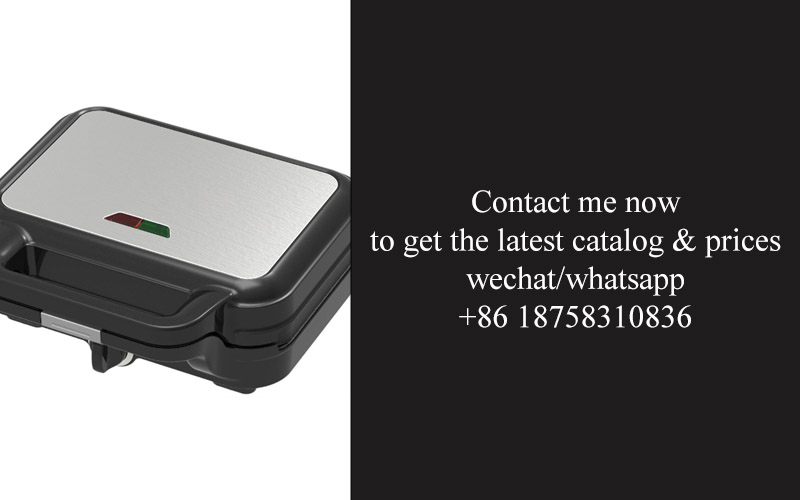
Ceramic coated non-stick plates have emerged as a beacon of innovation in the kitchenware industry, promising a healthier and more sustainable cooking experience. As we delve into the new era of cookware, it’s essential to reflect on the journey that has brought us here and the path that lies ahead. Here’s a look at the evolution and future of ceramic coated non-stick cookware, wrapped up in a concise yet comprehensive summary.
The transition from traditional non-stick coatings to ceramic alternatives has been driven by a growing awareness of health and environmental concerns. Traditional non-stick cookware often contains PFOA and PTFE, which, when overheated, can release harmful chemicals into food. Ceramic coatings, on the other hand, are free from these toxic substances, making them a safer choice for health-conscious consumers.
In recent years, there has been a noticeable shift in consumer preferences. People are gravitating towards cookware that not only performs well but also aligns with their values of sustainability and health. This shift has been further fueled by the increasing availability of ceramic coated non-stick plates in various shapes, sizes, and price points.
The rise of ceramic coated non-stick cookware has also been influenced by the evolving culinary landscape. With the popularity of healthier cooking methods like baking, grilling, and steaming, cookware that offers a non-stick surface without the use of oil has become a must-have for many home cooks. The ease of cleaning and the ability to cook with less fat have made ceramic coated plates a favorite among those looking to adopt healthier lifestyles.
When it comes to choosing the right ceramic coated non-stick plate, there are several factors to consider. The quality of the ceramic coating is paramount, as it determines the durability and non-stick performance of the cookware. Look for plates with a thick, even coating that is resistant to scratches and wear.
The material of the base is also crucial. Cookware with a stainless steel or aluminum base conducts heat efficiently, ensuring even cooking. The handle design should be ergonomic and comfortable to hold, especially when cooking over high heat.
Another important aspect is the compatibility with various cooking methods. Some ceramic coated plates are safe to use on induction cooktops, while others may require a heat diffuser. Check the manufacturer’s guidelines to ensure compatibility with your cooking equipment.
The market for ceramic coated non-stick cookware has been expanding rapidly, driven by innovative designs and a keen understanding of consumer needs. One such innovation is the introduction of plates with integrated temperature control features. These plates can alert the user when the surface temperature is too high, preventing the release of harmful chemicals.
In terms of sustainability, ceramic coated cookware is a step in the right direction. The materials used are more environmentally friendly, and the longevity of these products means fewer are ending up in landfills. Moreover, the ease of cleaning and the reduced need for harsh detergents contribute to a more eco-conscious kitchen.
Industry insights suggest that the demand for ceramic coated non-stick plates is expected to grow even further. As health and environmental concerns continue to rise, consumers are likely to seek out cookware that meets these criteria. Additionally, the versatility of ceramic coated plates makes them suitable for a wide range of recipes, from delicate sauces to hearty stews.
Looking ahead, the future of ceramic coated non-stick cookware seems bright. Advances in coating technology are likely to lead to even better non-stick properties and increased durability. We may see the integration of smart features that not only monitor cooking temperatures but also provide recipe suggestions and cooking times.
In conclusion, the new era of cookware is characterized by a focus on health, sustainability, and innovation. Ceramic coated non-stick plates have emerged as a shining example of how technology can improve our lives and our planet. As consumers, it’s up to us to embrace this change and choose cookware that aligns with our values and needs. The journey of ceramic coated non-stick cookware from a niche product to a staple in many kitchens is a testament to the power of progress and the importance of making informed choices.